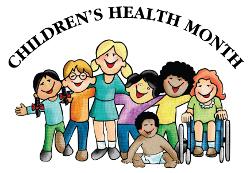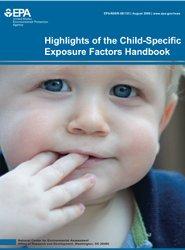EPA Science Matters Newsletter: Volume 1, Number 4
Published November 2010
Executive Message
- Executive Message - Children’s Health: Sustaining Our Future

There was a time in history when it was commonly assumed that the lives of one generation would be no different than the lives of the next—that the status quo would be maintained. But over time, people came to understand that we could work to make our children’s lives better than our own. We realized that the future for them might be brighter than anything we could imagine for ourselves. This was a major paradigm shift in thinking.
Advancements in science and technology catalyzed this shift. As we came to realize our potential in every sector from energy to medicine to materials and information technology, we began to set our sights on a future that would leave our children with longer and better lives than our own.
But there was a second shift in thinking. This time we came upon realization that many of the same technologies and advancements that were meant to improve the lives of future generations were also adversely impacting them with unintended consequences.
By introducing new substances and technologies the world had never seen, we gained tremendous power to change the future. But with this power came great responsibility.
Now we must ask ourselves this important question: have we been appropriately addressing this responsibility?
Have we incorporated an understanding of these unintended consequences into the design of new products and technologies? Have we included toxicological effects, endocrine disruption and reproductive developmental toxicities into our standards of performance? Have we sought to ensure that the lives of our children will not be made worse by the actions we take to protect them?
October is Children’s Health Month—an opportune time to ask ourselves these vital questions. Not just because our children must live in the world we create for them, but because their developing biological systems are uniquely susceptible to the effects of poor environmental planning, design, and management.
Today we have the opportunity to couple our expertise in understanding the problems we face with an ability to design next generation chemicals that reduce hazard through the principles of green chemistry.
We must combine the best of our intellect and action to design a tomorrow that is sustainable for our children. We must direct our highest degree of knowledge toward producing products and technologies that won’t impair reproduction or development.
It’s time to bring all we have to bear on the design of a sustainable tomorrow.Sincerely,
Paul T. Anastas
Assistant Administrator
U.S. EPA
Office of Research and DevelopmentLearn More
Children’s Health Month
- Celebrating Children’s Health Month
EPA scientists and their partners provide key research outcomes for reducing environmental risks and improving children’s health.

Spending time outside. Playing in the dirt. Crawling around on the floor. Exploring the world through touch, taste, and feel. Things are different for children. And while many of us see their unique differences—behaviors, diets, and growing bodies—with an eye toward responsibility and perhaps a bit of nostalgia, to environmental and health scientists, these differences raise important questions.
Do the differences experienced by individuals in the early stages of life open them up to increased environmental risks? Studying this question has given EPA scientists and their partners important insights into reducing environmental risks and improving children’s health. An overall goal is to provide parents, teachers, policy makers, local communities, and other caregivers the information they need to keep children healthy.
To help celebrate October as Children’s Health Month, this issue of Science Matters includes a special section to highlight just a few of the research programs and partnerships EPA scientists are leading in the area of children’s environmental health.
Featured stories:
- The Virtual Embryo Project (v-Embryo™), an effort to advance the science of developmental toxicology with high-tech computer models and vast data and knowledge bases
- The Children’s Environmental Health Centers program, a partnership between EPA and the National Institute of Environmental Health Sciences that has awarded more than $150 million over 12 years to support innovative, community-based, transdisciplinary children’s environmental health research
- The National Children’s Study, the largest federal study ever to explore the environmental influences on the health and development of children; and EPA’s Highlights of the Child Specific Exposure Factors Handbook, the go-to source for health experts needing a scientifically-based, quick reference guide to a host of factors used to estimate children’s exposure.
Protecting children from environmental threats is a priority for EPA and a core part of its mission to protect human health and the environment. As this issue of Science Matters shows, those efforts begin with science.
Learn More
- The Virtual Embryo Project
EPA researchers are developing a "Virtual Embryo" that will provide insights into how exposures to chemicals in the environment might affect the developing embryo.

The development of an embryo, from conception to birth, includes a highly coordinated sequence of cellular behaviors and interactions. While that process goes perfectly the vast majority of the time, at least three percent of babies are born each year with some observable malformation or developmental condition that may permanently shape the life of the child.
What role does a pregnant woman’s exposure to chemicals in the environment play in disrupting the development of an embryo? Scientists in the U.S. EPA’s computational toxicology research program are developing new ways to answer that question. And in the process they are helping revolutionize the field of developmental toxicology.
The traditional method of exploring how chemicals affect a developing embryo is conducting controlled tests on pregnant laboratory animals. While these practices provide valuable information, they can be both costly and slow. Reliance on them is one reason the pace of testing has not kept up with the development of commercial chemicals, leaving significant data gaps.
EPA scientists are carrying out a research program—the Virtual Embryo Project (v-Embryo™)—aimed at developing new methods that use high-tech computer modeling and vast collections of data and biological knowledge bases in place of traditional lab tests.
“The ultimate objective is to build a suite of screening models, a toolkit, that researchers can use to look at embryonic development and make scientifically-based predictions on how that development might be affected by different chemicals,” says Thomas B. Knudsen, Ph.D., an EPA systems biologist who is leading the project. “We are building models that properly integrate all the relevant data and information known about various organ systems and birth defects.”
Using a selection of everyday chemicals with known health effects in animals, Knudsen and an interdisciplinary team of reproductive toxicologists, computer engineers, programmers, bioinformaticians, biologists, mathematicians, and other experts are working to build computer-based virtual models of embryo development.
“Computer models can handle this complex information, and it is feasible with current math and engineering practices to use these models as a new approach for predicting the potential for environmental chemicals to affect a developing embryo,” explains Knudsen.
To start, Knudsen and his partners chose to develop computer models for embryo systems that are well documented, susceptible to environmental factors, and simple enough that computer engineers and programmers can simulate them. Three that fit the bill are embryonic eye, blood vessel, and limb development.
Once the embryo systems are simulated, the predictive value of these models will be tested. To do that, researchers will use new and existing data from standardized tests conducted in embryonic stem cells, zebrafish embryos, and ToxCast™, another EPA computational toxicology program.
The research team is made up of EPA scientists and outside partners, including contractors from Lockheed Martin and investigators from the Agency-funded Texas- Indiana Virtual STAR Center Exit. Collaborators representing a wide range of expertise from across academia, industry, and other governmental agencies provide project data.
Anyone with data or expertise to contribute, or who might want to partner with the v-Embryo team should contact Monica Linnenbrink (linnenbrink.monica@epa.gov or 919-541-1522).
Learn More
- Children’s Environmental Health Centers
EPA and the National Institute of Environmental Health Sciences support a network of research centers to improve children’s health and prevent disease.

The October 4, 2010 cover story for TIME magazine features the latest science in a field of study known as fetal origins, an emerging body of inquiry into the links between a person’s health and the conditions they were exposed to before birth, as a developing embryo.
In the article, entitled How the First Nine Months Shape the Rest of Your Life, science journalist Annie Murphy Paul highlights case studies that illustrate some of the evidence that scientists have uncovered suggesting that a women’s nutritional intake, health, and environment can have profound effects on her eventual offspring far down the road, years, perhaps even decades, later.
To illustrate how exposure to environmental contaminants play a role in fetal origins, Paul turned to the innovative work carried out at one of the nation’s Centers for Children's Environmental Health and Disease Prevention Research (“Children’s Centers”).
Priority Research: Protecting the Most Vulnerable
The U.S. Environmental Protection Agency (EPA), in collaboration with the National Institutes of Environmental Health Sciences (NIEHS), established the Children’s Centers in 1998 as part of an ambitious research grant program to enlist and support leading health scientists to tackle questions about children and the environment.
Over the last 12 years, EPA and NIEHS have awarded more than $150 million to support the Children’s Centers Program. The centers foster a collaborative network of leading scientists, pediatricians, epidemiologists, and community advocates, all seeking to improve the health and environments of children.
The Centers’ collective efforts are aimed at learning how environmental exposures to pregnant women and young children are linked to health outcomes, including many of today’s most pressing concerns such as asthma, autism, attention deficit hyperactivity disorder (ADHD), diabetes, and obesity. In addition, Center researchers have been working to better understand the basic mechanisms of exposure to pesticides and other environmental chemicals and the potential toxicity of those chemicals to children’s health.
The Centers engage a diverse, multidisciplinary set of researchers working with populations of mothers and children in both urban and rural areas across the United States. Several Centers have focused research and outreach efforts within populations of young people most at risk, such as those children whose parents are agricultural workers or from low-income families. Each Center fosters community participation in one or more studies.
The Children’s Centers research program explicitly encourages scientists to share their findings as early as possible, in ways that make important information accessible, understandable, and useful to doctors, nurses, and public health officials. Center researchers have published a number of important, high-profile findings on many research subjects, including asthma, exposures to household and agricultural pesticides, epidemiology, air pollution, prenatal exposure to environmental tobacco smoke, and the identification of environmental triggers.Research outcomes from the Centers have laid the scientific foundation for a whole new way of thinking about children and the environment. Important findings that are making a difference in children’s lives today include:
- People metabolize pesticides differently based on their genotype; some faster, others slower. This finding is of particular concern during pregnancy, as many babies do not develop the ability to metabolize some pesticides during the first two years of life, putting them at greater risks of health effects.
- Children living close to major roadways in Southern California have a higher risk of asthma, and prenatal exposure to PAHs (common components of vehicle exhaust, cigarette smoke and factory emissions) can lower a child’s score on IQ tests and in one study were found to be related to cognitive delay at age three.
- EPA’s ban on two household pesticides (diazinon and chlorpyrifos) resulted in a rapid decrease in exposures in New York City. Children born after the ban were also healthier.
- Integrated Pest Management (IPM) can be effectively implemented in urban areas to reduce both exposure to pesticides and allergen triggers.
- Community partners play a critical role in informing, implementing, and translating children’s environmental health research.
The new Children’s Centers and their research projects, as well as ongoing projects and others, promise to continue to advance the scientific understanding of children and the environment as dramatically as the results from the work over the past ten years.
Learn More
- U.S. EPA’s site for Children’s Health Research
- Protecting Children’s Health for a Lifetime: Environmental Health Research Meets Clinical Practice and Public Policy Public Meeting was held October 19 and 20 in Washington, DC.
- The National Institute for Environmental Health Science
- The National Children’s Study
EPA researchers help lead the largest federal study ever undertaken to examine environmental influences on the health and development of children.

What could data collected from more than 100,000 children from across the country, from before their birth through their 21st birthdays, tell us about how environmental influences might affect the health and development of the nation’s children? A consortium of federal partners—including the U.S. Environmental Protection Agency, the Eunice Kennedy Shriver National Institute of Child Health and Human Development, the Centers for Disease Control and Prevention, and the National Institute of Environmental Health Sciences—is working to answer just that question.
The National Children’s Study (NCS) is the largest long-term study of environmental and genetic influences on children’s health ever conducted in the United States. During the study, researchers will follow 100,000 children from before birth through their 21st birthdays to learn how family health history and the environments in which children live, learn, and play affect their health and development.
The overall goal is to build a scientific foundation that will form the basis of child health guidance, interventions, and policy for generations to come.
“The study will look at how our children’s environments affect their health, their growth, and their development. Researchers will look at what children are exposed to in their environments as early as possible, even before they are born,” says Kevin Teichman, Ph.D., the Deputy Assistant Administrator for Science at EPA and the Agency’s representative on the NCS Advisory Committee.
“Because the study is so large and is looking at so many different types of environments, we will be able to look at why some people get sick and others do not, even when they live in the same locations and do many of the same things,” Teichman explains.
Researchers will gather the information needed to better understand how children’s genes and environments interact to affect their health and development. The study will also examine how events and exposures early in life can lead to health problems, such as asthma, later on. Study analysis will consider the differences that exist between various groups of people across the country in terms of their health care access, disease occurrence, and other issues, so that these differences or disparities can be addressed.
Participating mothers will provide information through periodic appointments or interviews with study staff before and during pregnancy and as her child grows. Children will participate as they become able, and fathers will have the opportunity to provide information as well. Researchers will also collect environmental samples such as air, waters, and dust in the participants’ homes. Mothers and children will also provide biological samples such as urine, blood, and breast milk, which will be tested for the presence of certain environmental chemicals.
Data from the study are expected to inform research into a host of different conditions, including birth defects and pregnancy-related problems, injuries, asthma, obesity, diabetes, and behavior, learning, and mental health disorders.
Informing the Science: EPA’s Role
As the nation’s leading agency for environmental and human health research and policy, EPA has served a critical role in the design and execution of the NCS. That work began with helping to guide the design of the study and continues with the Agency’s active participating on the NCS Interagency Coordinating Committee and various NCS work groups.“By getting involved early in the process, EPA scientists were able to help our partners in study design develop an overall research framework that would lead to important hypotheses and define priority outcomes,” says EPA research scientist James Quackenboss, an expert on exposure studies and an NCS Interagency Coordinating Committee member.
Quackenboss explained how he and his colleagues have worked with EPA’s program offices and regions to help bridge the gap between what NCS researchers would learn and the kinds of information needed by EPA to protect children. “EPA researchers help guide the study to ensure that it is relevant,” he explains.
EPA scientists also contribute their expertise in exposure science and environmental monitoring and assessment. For example, the Agency has funded and led a number of method development projects and workshops to inform the design and execution of the study.
Agency personnel helped to plan community-based elements critical to the study, such as the recruitment and retention of study participants to ensure that results will be relevant to children living anywhere in the country.
Although the study is an ongoing effort that will continue for many years, findings and databases will be released as soon as possible in order to make the potential benefits known to the public. Many peer-reviewed scientific papers have already been published.
Ultimately, findings from the Study will help to ensure a brighter and healthier future for America’s children.
Learn More
- A Helping Hand for Children’s Health
EPA’s “Highlights of the Child Specific Exposure Factors Handbook” is a great resource for children’s health experts.

Children are curious creatures. They eat dirt, touch bugs, and investigate anything and everything they can, simply because this exploration is how they learn. Sometimes, such behavior results in exposure to substances that can adversely affect their health. This risk is compounded by the fact that children’s bodily systems are not fully developed, and they eat, drink, and breathe more than adults in proportion to their body sizes.
In response, EPA is working hard to improve estimates of children’s exposure to chemicals in the environment, and to identify what can be done to minimize such exposures.
As a part of this goal, EPA released Highlights of the Child Specific Exposure Factors Handbook, a quick-reference guide to various factors used to estimate exposure. These factors define behavioral and physiological information about children such as: breathing rates, intake rates for drinking water and food, how much soil and dust are ingested, and skin contact information. This information is provided using a standard set of age categories for children so that exposure estimates can be made for children of all ages.
The information contained in the Handbook helps risk assessors make better exposure estimates, thus better informing decisions relating to the health and safety of children. The Handbook is already in use both inside and outside EPA. For example, the Agency used the data from the Child-Specific Exposure Factors Handbook in its analysis of exposure to children who may come in contact with arsenic, chromium, and copper while climbing on Chromated Copper Arsenate (CCA) treated wooded playground equipment. It has also been used in the Agency’s development of standard instructions for estimating exposure resulting from various consumer-related (non-occupational) pesticide uses, including lawn and garden care, foggers, and pet treatments.
Nearly every exposure and risk assessment conducted by the Agency uses the information on exposure factors included in the Highlights document. For children’s health experts and scientists like EPA’s Becky Cuthbertson, the Handbook is an invaluable tool for decision-making. “From a practicing risk assessor's point of view, finding the correct input quickly and easily is incredibly important,” says Cuthbertson, who was an integral part of the team that authored the document. “The revised handbook goes a long way, especially with the reorganizing of the recommended values in a table up front in each chapter.” The EPA hopes that the Highlights document willfacilitate experts’ access to exposure factors recommendations.
Highlights of the Child-Specific Exposure Factors Handbook is just one of the many ways in which the U.S. Environmental Protection Agency is working to protect children’s health. Through ongoing research, EPA scientists are publishing new findings and working towards scientific breakthroughs every day.
Learn More
GEMS: Great Environmental Moments in Science
- What’s Ailing Your Stream? CADDIS Can Help You Find Out
EPA researchers have updated an online tool that helps scientists from states and tribes find out what’s harming plant and animal life in streams, rivers, and wetlands.

Something was amiss in Long Creek. Biologists from the state of Maine noticed that organisms that should live in the creek were being replaced by ones known to withstand pollution. But what was causing the change? Increased storm flow from new parking lots? De-icing chemicals from roads and the airport? Nutrients and pesticides from the golf course? The scientists were interested in improving Long Creek—but to develop an effective management plan, they needed to know what to fix.
An EPA tool called CADDIS helped biologists from the state of Maine and their EPA collaborators figure it out.CADDIS, or the Causal Analysis/Diagnosis Decision Information System, is an application that uses EPA’s Stressor Identification (SI) process, supporting information, and other assessment tools to help scientists systematically evaluate the causes of harm to plants and animals in aquatic habitats.
CADDIS helps environmental scientists systematically determine why a body of water is biologically impaired. In some instances, the process produces a clear-cut answer. In other cases, it points to several possible explanations and suggests additional tests that can narrow down the possibilities.
Scientists sample the insects and other tiny creatures that live in a body of water as one way of evaluating its health. The kinds of creatures that live in healthy environments are different from those that live in troubled areas, so these counts serve as an indicator of whether or not all is well.
The name CADDIS is not only an acronym; it also refers to caddisflies, a group of insects used by biologists to monitor stream health.
At Long Creek, the composition of the community of macroinvertebrates was not the only indication that the creek was in trouble. The brook trout population that had historically inhabited the stream had vanished. Maine state biologists and EPA scientists used the SI process described on CADDIS website to help them analyze the problems in the creek and identify their possible causes.
As EPA ecologist Kate Schofield explains, they found not one probable cause but several—and all were related to urban development. Multiple effects of urbanization—such as altered water flow, decreased amounts of dissolved oxygen in the water, and the presence of toxic substances—were interacting to harm the animal life in Long Creek.
CADDIS has helped solve environmental mysteries in many areas of the country, including the Willimantic River in Connecticut, the Little Scioto River in Ohio, the Touchet River in Washington state, and the Bogue Homo River in Mississippi. At least 15 states have used either CADDIS or EPA’s SI process.
A new, enhanced version of CADDIS was released in September 2010. “An important feature added for the 2010 release,” explains Schofield, “is new modules on five topics: physical habitat, pH, insecticides, herbicides, and ammonia.” These new modules, added to the eight preexisting modules on other stressors such as flow alteration, temperature, and sediment, have broadened the variety of situations that CADDIS can help scientists to address.“The new CADDIS also includes a module on urbanization,” Schofield says. “This module takes a different approach, by focusing on a source of impairment rather than a specific stressor. It provides background information on urbanization in streams and the kinds of issues you need to think about if you suspect that urban development is significantly affecting your stream.”
“Another new section of CADDIS provides case studies that walk users through the assessments that different states have done,” adds Schofield. The case studies come from several parts of the country and focus on different types of habitats. The 2010 release also includes an interactive tool for building conceptual diagrams and linking these diagrams to evidence published by other researchers.
CADDIS helps state agencies improve the condition of streams and other bodies of water by helping them pinpoint the causes of problems so that remedial actions can be targeted where they will do the most good. By providing expanded guidance and resources, the 2010 release of CADDIS will enable watershed managers to better protect the health of our Nation’s waters.
Learn More
- Climate Change Penalty on Ozone
EPA scientist finds new metric to measure impacts of climate change on ozone air quality.

Summer sun and rising temperatures bring worries of sunburn and high heat. While hot summer months keep many people indoors, heat may not be the only cause for concern.
Rising temperatures also raise the risk of ozone exposure.
Ground level ozone forms when air containing hydrocarbons and nitrogen oxides (NOx) reacts with sunlight to form ozone. Ozone is an atmospheric pollutant and a health concern because of its harmful effects on the respiratory and cardio vascular systems. Unhealthy levels of ozone also have an effect on the environment, interfering with photosynthesis and damaging crop yields. High temperatures increase ozone formation, especially during the warm months of May to September, also known as “ozone season.” Average temperatures have been rising in the eastern United States and experts expect the trend to continue.
While many potential effects of climate change are hard to measure, EPA scientist Bryan Bloomer has found a way to estimate the amount of ozone in Earth’s future environment by using current and past data. Bloomer examined 21 years of ozone and temperature levels compiled by the U.S. EPA’s Clean Air Status and Trends Network (CASTNET) from rural areas in the eastern U.S.
The data showed a steady rise in ozone amount as temperature increases. He also discovered that decreases in nitrogen oxide (NOx) emissions from power plants around 2002—due to compliance with new emissions standards—appeared to lower the amount of ozone produced per degree of rising temperature. Bloomer was able to quantify this relationship between ozone and temperature using a measure that he calls the “climate penalty factor.” Bloomer found that the decrease in NOx emissions also led to a decrease in the climate penalty factor.
“We had evidence of the climate change penalty in ozone air quality from modeling studies but we wanted to find observational evidence of it with this study,” explains Bryan Bloomer. “We had a strong suspicion that the linear relationship did exist though we didn’t know what the numbers were. What is surprising to see is that the relationship is so strong and the numbers are remarkably consistent over the entire rural eastern U.S. in the summertime.”
The ability to lower ozone production by reducing NOx emissions is welcome news to countries like the U.S., who have begun putting restrictions in place. The EPA recently made revisions to strengthen the health-based National Ambient Air Quality Standards (NAAQS) for NOx. According to Bloomer, the benefits of the research are clear. “The Climate Penalty Factor is a good tool to estimate the impact of climate change on air quality in the presence of rising temperatures and constant emissions. It also shows us that NOx reductions are a good idea and effective both for the direct reduction of ozone amounts and for lowering the climate penalty factor.”
Understanding and using the climate penalty factor will benefit any community that wants to identify their potential risk for exposure to unhealthy levels of ozone in the future because of rising temperatures. Bloomer’s research is important to taking action on climate change and improving air quality, two EPA priorities. He is currently pursuing research on the climate change penalty and its effects on areas beyond the eastern U.S. and around the world.
Learn More
- EPA Clean Air Research
-
For complete details and the original study: Observed relationships of ozone air pollution with temperature and emissions Exit
- The Research Apprenticeship Program Celebrates 20 Years of Success
EPA and Shaw University team up to engage students in science, math, and engineering.

“The Shaw-EPA Research Apprenticeship Program has been an excellent program for me throughout high school. The internship provided me with meaningful, real-world research experience and helped me become aware of many career opportunities for people with my interests,” says James Turner, a 2010 graduate of the Research Apprenticeship Program (RAP).
The program engages minority students in science and engineering. 2010 marks 20 years of collaboration between the U.S. Environmental Protection Agency (EPA) and Shaw University, a historically black university in Raleigh, NC.
The program provides scientific instruction outside of the traditional school curriculum to spark students’ interest in science, math, and engineering and encourage them to pursue advanced degrees in related disciplines. This is achieved through a curriculum that maximizes exposure to scientific concepts and research.
Students are nominated as eighth graders by guidance counselors, principals, and math and science teachers. Each year, ten to fifteen students are selected for the program from a pool of 80 to 120 applicants. “I felt as though it was an honor and a great privilege to be a part of the program. Having exposure to college students, professors and EPA scientists was a major experience for a rising ninth grader,” says LeRon Celeste Jackson, M.D., a 1998 graduate of the program.
The students apprentice for six weeks with an EPA scientist for their final summer and just before their senior year of high school. At the end of the apprenticeship program, students present their research to an audience of mentors, friends, parents, fellow students, and scientists.
The program not only instills technical abilities in its students; it also enhances the students’ motivation and desire to achieve. Dr. Jackson reflects on this aspect of her experience, “Entering the program was a life changing series of events as I became entrenched with a group of like minded, motivated kids who wanted to explore and succeed in academics.”
EPA provides funding, coordinates the application process, and presents monthly seminars during the academic year. The Agency also coordinates the summer program, including final presentations and tours of EPA labs and other research facilities.
Kelly Leovic, RAP Project Officer from 1996 to 2008, appreciates the enthusiasm and knowledge students bring to the EPA campus. "These students are always so well prepared, both in science and in communication skills, that they are often mistaken for college (not high school) students while at EPA. They learn the required lab skills quickly and then effectively communicate their experiences in a fabulous closing program. The students also serve as positive role models for their peers when they return to their Wake County, NC high schools during the academic year."
In its 20 years, more than 120 students have completed the program. An astounding one hundred percent of those students have finished college, and of those, 90% have majored in science, math, or engineering. 57% have continued on to graduate or professional school. Participants have co-authored peer-reviewed journal articles based on research conducted while working at EPA, been employed at EPA in subsequent summers, been selected into competitive schools and research programs, and been the recipients of over half a million dollars in scholarships and grants.
Learn More
- Using Biological Criteria and the Clean Water Act to Protect Coral Reefs
EPA researchers recently published a manual describing how to protect coral reefs from land-based stressors.

Coral reefs are the largest living structures on the planet and have greater biodiversity than rainforests. But they are also one of the most threatened marine ecosystems. Coral reefs are sensitive environments because of their highly specific requirements for temperature, salinity, oxygen, light, and nutrients. Pollution, disease, climate change, physical contact, and habitat destruction threaten these fragile ecosystems.
Coral reefs serve as habitat for abundant and diverse communities, providing food and shelter to a wide variety of species, including those at the base of the marine food chain. Their astounding natural beauty attracts divers and supports a large tourism industry. Coral reefs serve as habitat and nursery grounds for fish and invertebrates that are harvested in commercial, recreational, and subsistence fisheries. The high biodiversity of coral reefs provides natural products for pharmaceutical and cosmetic industries. Often overlooked is the role of coral reefs in protecting coastlines from storms and floods and providing sand for beaches. Corals also are an important social and cultural focus, especially in small island-nations where so many coral reefs occur.
Many actions have been taken to reduce damage to coral reefs. For example, marine sanctuaries and protected areas have been established to reduce harvesting at reefs; this reduces the detrimental effects of overfishing and physical damage from boat anchors and groundings.
Land-based sources of pollution, however, are not effectively controlled by actions at the reef. Rather, these must be controlled in the watershed. Sediments, nutrients, and contaminants that are washed from the land are carried downstream to coastal zones where they ultimately can affect coral reefs and other marine ecosystems.
The President’s Ocean Action Plan (2004) required EPA to develop the tools and knowledge necessary to protect coral reefs from land-based pollution using coral reef biological criteria, a tool to protect biological integrity under authority of the Clean Water Act (CWA). This became the motivation behind the EPA publication Coral Reef Biological Criteria: Using the Clean Water Act to Protect a National Treasure (PDF) (153 pp, 4.85 MB, About PDF). The manual was written for coral reef managers and stakeholders including nearby residents, tourists, fishermen, marine and land-based industries, conservation and environmental groups, research organizations and educational institutions. It serves as a comprehensive guide on how to use the CWA and biological criteria to enhance coral reef protection efforts.
EPA’s Patricia Bradley, the lead author of the publication, explains how it fits into the other work reef managers are already doing. “The manual walks them through the steps very logically and links things back to what they’re already doing. Coral reef managers are all working really hard, with limited resources. But corals are continuing to degrade because of stressors outside the reef managers’ control—climate change and land-based pollution.”
Bradley emphasizes that “we need to be able to figure out how to minimize the stressors. Biocriteria is one tool in the toolbox.” EPA has successfully applied the Clean Water Act and biocriteria to protect fresh water and estuarine systems, but not yet to any marine ecosystem.
A year in the making, the manual compiles an array of research performed by EPA scientists, research that is continuing to better facilitate development and implementation of coral reef biocriteria by jurisdictions.
The research team works with EPA’s Office of Water, using the Agency’s Ocean Survey Vessel BOLD to complete many of the reef assessments required to develop biocriteria approaches. Current efforts include collaborations with EPA Region 2 (which includes the Caribbean Sea surrounding Puerto Rico and U.S. Virgin Islands) where research divers assess the condition of reef corals, fish, sponges, and benthic invertebrates in an effort to understand which organisms and which measurements are responsive to human activities or disturbances in the watershed. Previous surveys have determined approaches for regional condition reporting for coral reefs, which have a patchy distribution.
Coral reefs have declined as much as 20% over last 40 years and maybe as much as 80% in the Caribbean Sea. They are a national treasure and a vital ecosystem to protect. Despite actions already taken, the potential for biocriteria is too great to ignore.
Learn More
-
Ocean Survey Vessel BOLD Search EPA Archive
